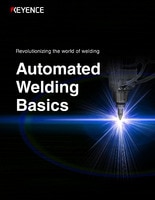Types of welding
Welding is broadly divided into three groups: fusion welding, pressure welding, and brazing/soldering, each of which is made up of many welding methods. This is because the optimum welding method depends on the type of base materials to be welded, the functionality required for the welded product, and other considerations.
Welding can be broadly classified into three groups according to the joining method used:
Fusion welding melts base materials or a base material and a welding rod used for joining the base material (filler material); pressure welding melts base materials mechanically through friction, pressure or electric current; and brazing/soldering uses a filler material (brazing paste) applied on the joining sections.
There are many different welding methods in each group that allow selection of the optimum method depending on the base materials to be joined and other conditions.
| Metallurgical joining (welding) | Fusion welding |
|
|---|---|---|
| Pressure welding |
|
|
| Brazing/soldering |
|
The classifications above are just an example. There are various ways to classify the types, and some may differ from the table above.




